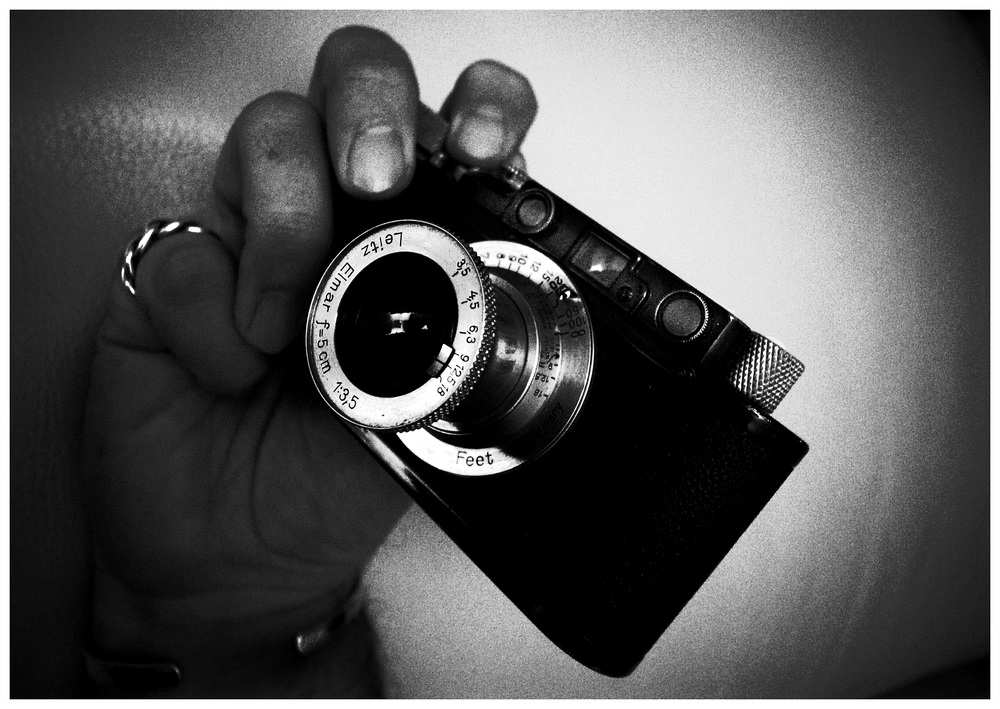
Guten Morgen!
I would like to introduce myself. Today, the Englishman calls me “Barnack” in honour of my designer but over the years I have been known by many names, and held in many hands. If you will indulge me, I shall tell you some of my story.
I was born in 1930, in a small town in Germany called Wetzlar. It was a fine day in early Summer. Mensch, was I not a sight to see in those days! My elegant suit of midnight black vulcanite fitted me like a glove, and was set off by my glossy black top and bottom plates. I thought I was—what was that word we used then—“snazzy”.
At first I was known by my birth name, LENEU. I was the last word in those days. Unlike my predecessors I was born with the ability to change lenses! Oh how I looked down on my older brothers. At the factory I was introduced to a lens called ELMAR and we got together famously from the outset. He was a clever chap—he could extend forwards, and click into place to take a picture. He was sharp, and fast, and we made a fine pair.
My very first journey was quite short; I was bought by a doctor who had a practice in nearby Driedorf. He was very excited to have me and practised for hours loading me with film. He kept me in a leather case and took me on hikes and cycle trips. He had two lovely daughters and a son who were very keen to be photographed. Sometimes he fitted me with a timer, and got into the photo himself—oh how his wife laughed when he fell over one day in his haste.
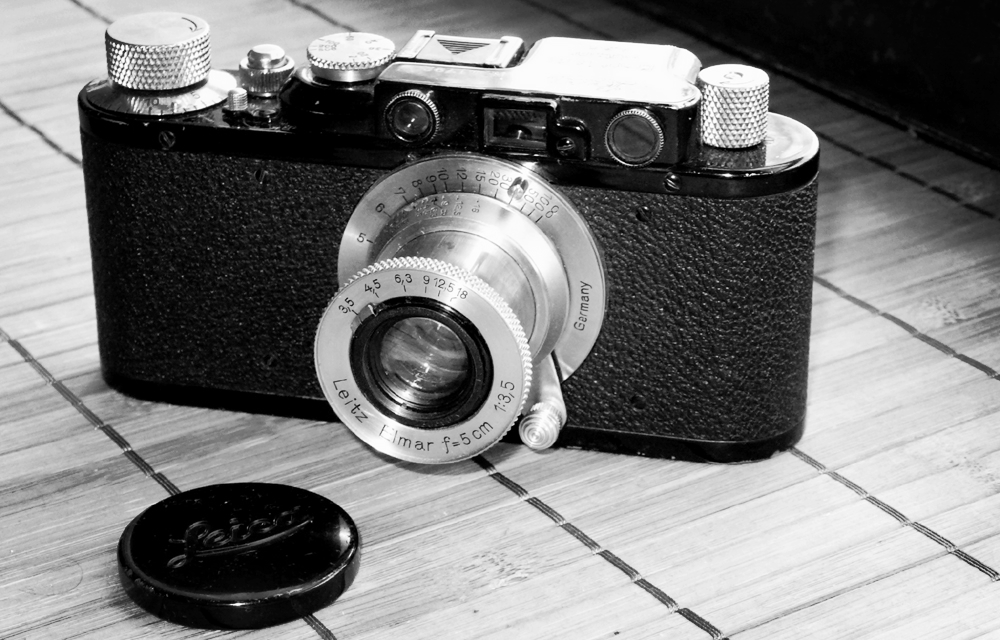
They were happy days at first. It was always Summer, or so it seemed, when I was taken out for a walk. In 1932 I went back to my birthplace for a few days. When I came out I had a whole new top, and a new name. I was now LYCAN, or some people called me a “Leica II” The big difference was that I had a rangefinder now—I could judge distances for ELMAR which made my doctor very happy—all his photos were suddenly sharper.
Brown shirt
Then one day I realised that my family did not look happy any more. The son had taken to wearing a brown shirt all the time and he and his friends borrowed me often to take photos of themselves with their arms in the air. My doctor and his wife were not smiling so much; I think they were not happy with what he was doing. I was left for a while, forgotten about, on a shelf.
One day I was picked up and dusted off and was handed by my doctor to his son; he looked so sad as he passed me over. It was 1937 now, and the boy was eighteen years old —a young man. He had changed his brown shirt for a grey uniform, I noticed. He put me in a duffel bag along with a handful of films. When I saw daylight again, I was in Spain.
At first I witnessed lots of other young men standing around looking happy, and smiling to have their picture taken. They were all dressed in the same grey uniforms as my new owner and were posing in front of big metal trucks and tracked vehicles. I saw girls too, sitting with the young men at pavement cafes. It all seemed very friendly.
Then everything changed. The doctor’s son started pointing me at bombed out buildings, rubble and big craters. I witnessed things that I wish I had not. Long lines of people fleeing their homes, dead bodies. It was horrible. I wanted to turn away, but I could not. I had to see, to capture, to witness. The hands that held me trembled sometimes.
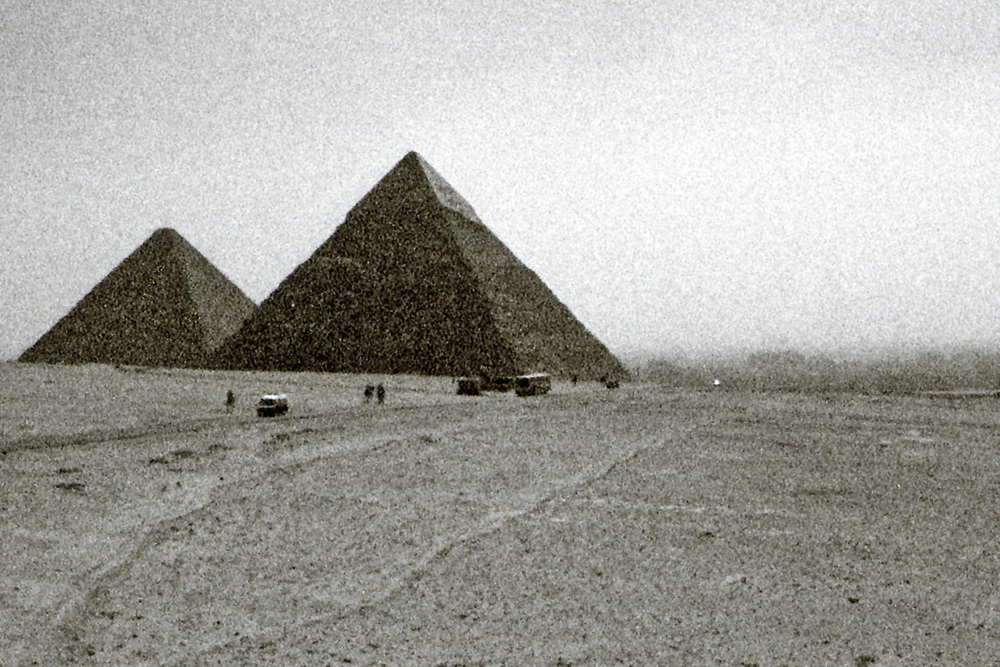
The next thing I remember was in 1942. I was in a hot and dusty place now, and all my pictures seemed to be of tanks, camels, even the odd oasis. It was so hot I burned the hands of the doctor’s son and he dropped me on a rock. My faithful friend ELMAR was broken. He was taken away and I never saw him again. A few weeks later a parcel arrived from home and in his place I now wore a wider lens—a 3.5cm! The doctor’s son found it easier to fit me in a pocket now, and quicker to use me for what he called “snaps”.
Travels
Oh how we travelled in those days. After the desert I went to Russia. That was cold! I came close to Moscow but I never actually went into the city. I was so cold that I could not work, and the doctor’s son put me at the bottom of his bag and left me there for a long time.
The last time I saw him, we were in Belgium in 1944. We were sitting in the turret of a tank. I was in his pocket when the whole world exploded and he was thrown clear. He was one of the fortunate ones, he did not die. We were captured by men in green uniforms. They took me away from him. One of them slipped me in his pocket and that was the last I saw of the doctor’s son.
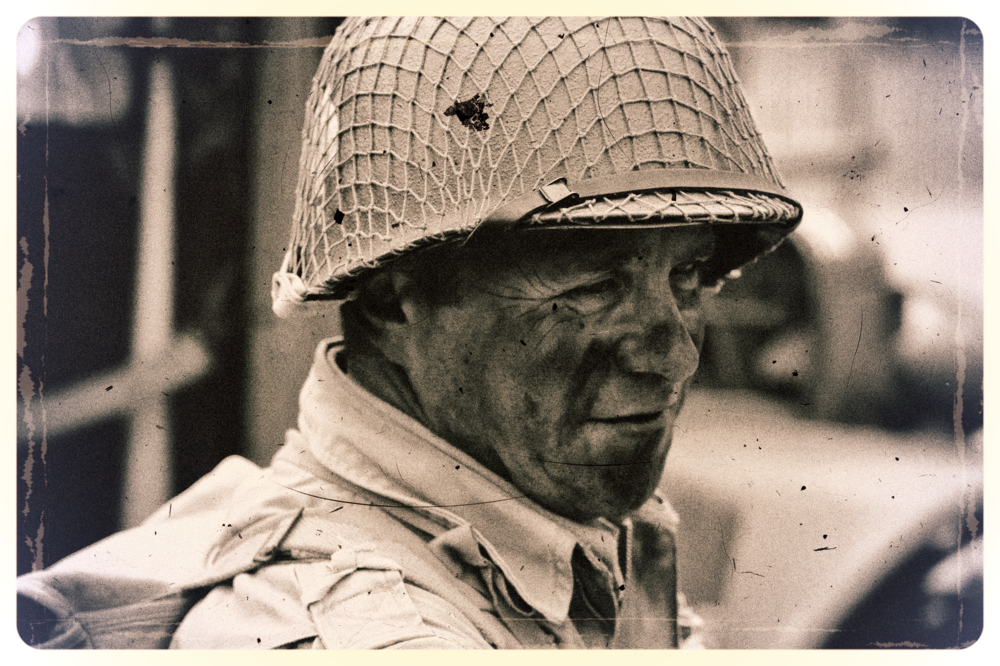
America! I never thought I would see it, but there I was. It turned out that the GI who had—what was the word he used, “liberated” me—lived in New York. He took me home with him and then lost me in a poker game to a friend of his who took me absolutely everywhere. My new owner considered himself a “serious” photographer and spent hours wandering the streets pointing me at whatever took his fancy.
Thanks to him, I witnessed Joe Louis beat Jersey Joe. Twice! The second time I was so close that I could see the sweat fly off the men as they pounded each other. I also witnessed Joe DiMaggio smash twelve home runs —and marry Marilyn Monroe. Now she was a beauty. I was there when the United Nations opened its doors for the first time.
My American man really liked jazz music. After a while he treated me to a brand new lens—a fast piece this one, a Summarit called SOOIA. Suddenly I felt as if I could see in the dark! He loaded me up with fast film—400ASA—and we explored the clubs in New York and New Jersey. I witnessed Charlie Parker, Thelonious Monk and Nina Simone. I rarely saw daylight but I earned my keep. My American man sold some of my photos to magazines and made quite a name for himself.
They were heady days, and I worked harder than ever before. Things got even more exciting when we went and listened to some beat poets. One night we were at Chumley’s in Greenwich Village as I witnessed Allen Ginsberg when the police arrived. They arrested everyone including my American man, but they didn’t find the little bag of weed that he had quickly hidden behind my lens. It made my shutter curtain smell odd for weeks though…
It all came to an end when my American man came home one day with a shiny chromium Leica M3. It was bigger than me, faster than me, easier to use than me, and just, well, newer. He had new lenses too, all bought with the proceeds of the photos he had taken with me and sold to the magazines. They had a new “bayonet” mount and I could not accept them. He took my lovely SOOIA away and fitted her with an adapter and mounted her on that upstart. The cheek of it! He wrapped me in some waxed paper and put me in a drawer.
Ten years in a dark place
I slumbered in that drawer for the next decade. When I think of what I missed…! It was 1966 when I was taken out again. My American man had me cleaned and serviced, fitted me with a lens—another 5cm ELMAR—and handed me to his son. The lad was nineteen and he was going to Indochina. My American man cried as he handed me over and held the boy for a long time. He seemed so young. He showed him how to use me and his wife took some photos of the two of us standing together.
I had been to war before, but never had I known anything like Vietnam. I was with the young soldier every day he went to fight, riding in an old ammo pouch at his waist. It was hot and humid, and he had to wipe my lens many times. He used me a lot, as I witnessed the other young men he was fighting with. The faces kept changing. So many young lives—I saw them all.
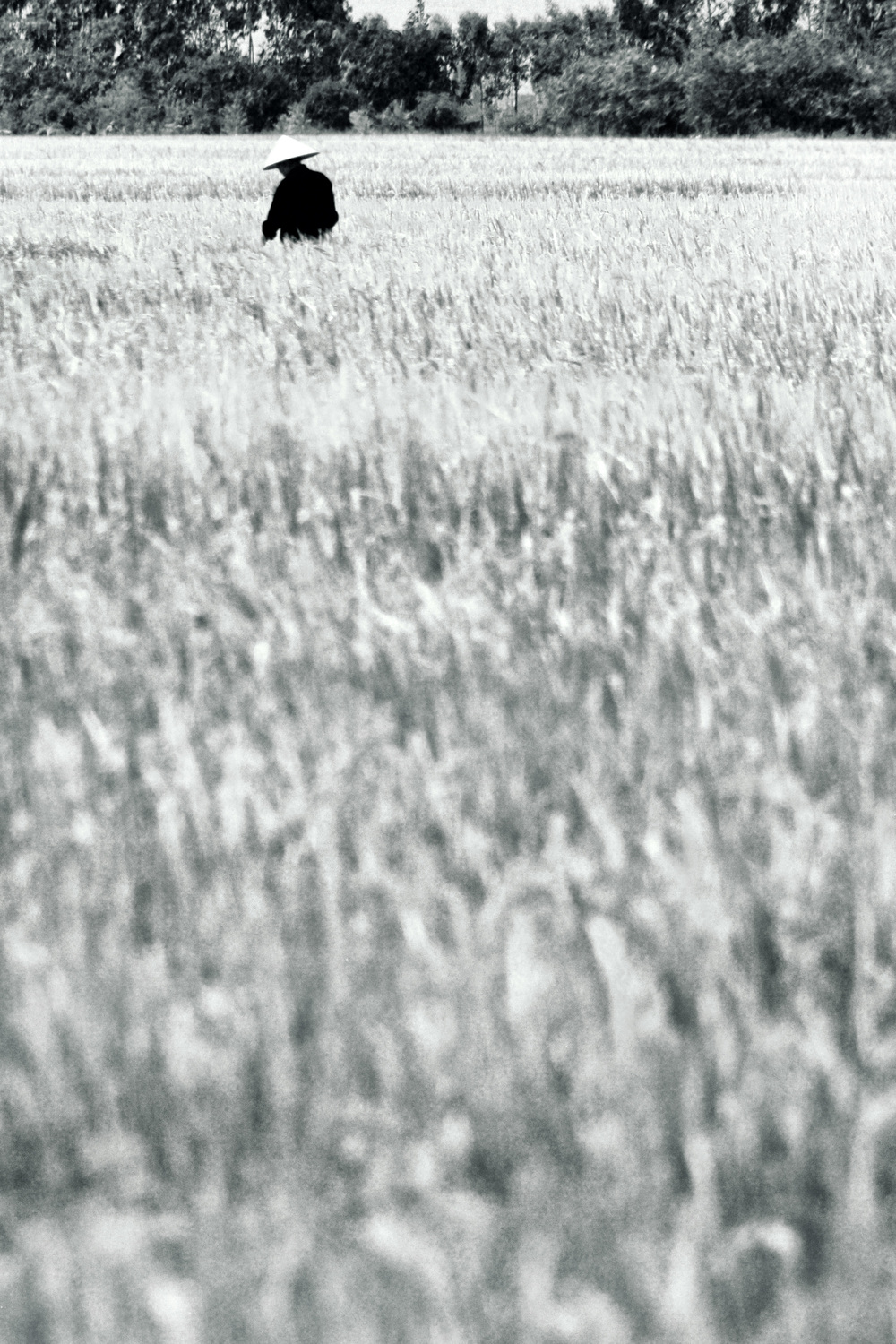
It was an odd war. We would ride into battle in a helicopter in the morning and back out again each afternoon. In the evening the young soldier would drink American beers in a bar in Hue with his friends. He used me to capture many pretty girls. One in particular, he used me to photograph a lot. A few months later I witnessed the birth of their son in the hospital in Saigon.
There was one day when the young soldier left me behind with the boy and his mother. He didn’t mean to, I know, but he left in such a rush. He never came back. She kept me as a reminder of her handsome young American lover. She took me with her the day the helicopters came.
I was in her hand when we flew out and landed on a US destroyer in the Gulf of Tonkin. All she had was her clothes, their little son—and me. She handed me to one of the sailors and he held me as I witnessed the two of them standing on deck as the helicopter that had brought them was pushed overboard into the sea.
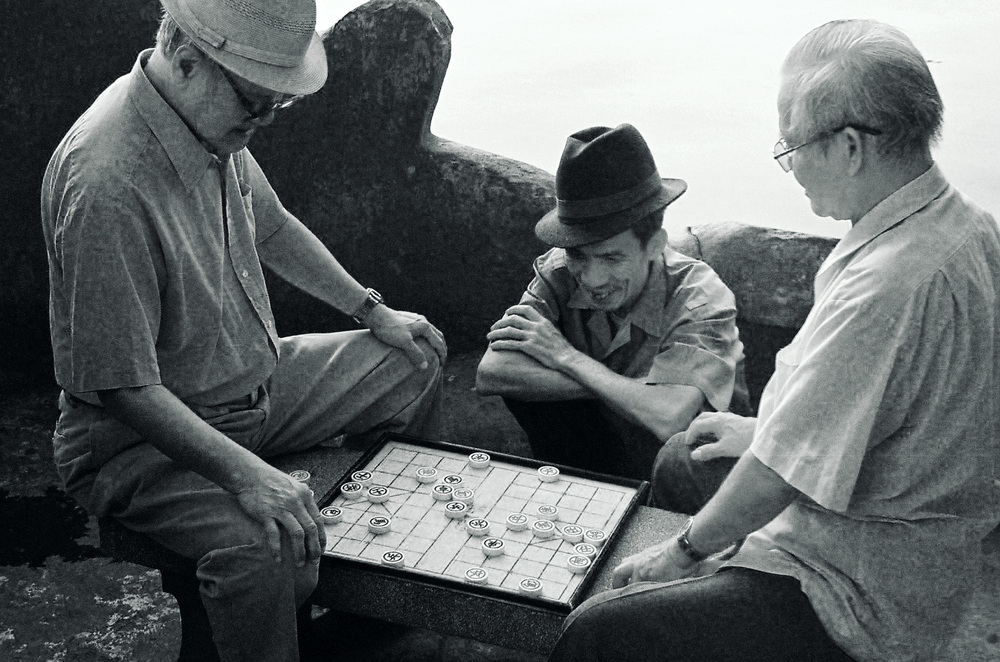
I returned once more to America. The young soldier’s father took the girl in and he and his wife looked after her and doted upon the boy. It was a quiet time for me. I sat on a shelf beside a photo of the young soldier and a purple heart—a memento of his tragically short life—and gradually gathered dust.
More rest
For many years, I rested unused. The family moved and moved on and I was put in a box and gradually forgotten. I was old, by now. A thing of brass and glass in an era of transistors, teflon and cathode ray tubes. Nobody was interested in me anymore. Nobody wanted to use an old camera. Autofocus was the thing now, and motor drives, zooms—and then digital. My days were long gone.
I slumbered.
I slept.
Do you know, I even missed the turning of the Millennium. I bet that was a sight to see!
Then on a cold Autumn day in 2007 a man took me out of my box. He turned me over, worked my shutter a few times, peered through my viewfinder—hard to do now, with the grime of so many years obscuring the glass—and he took my lens off, put me on a table and photographed me from many angles. Within a week, he was boxing me up once more. I knew from the noises, and the motion, that I was travelling again—and this time it was another long distance.
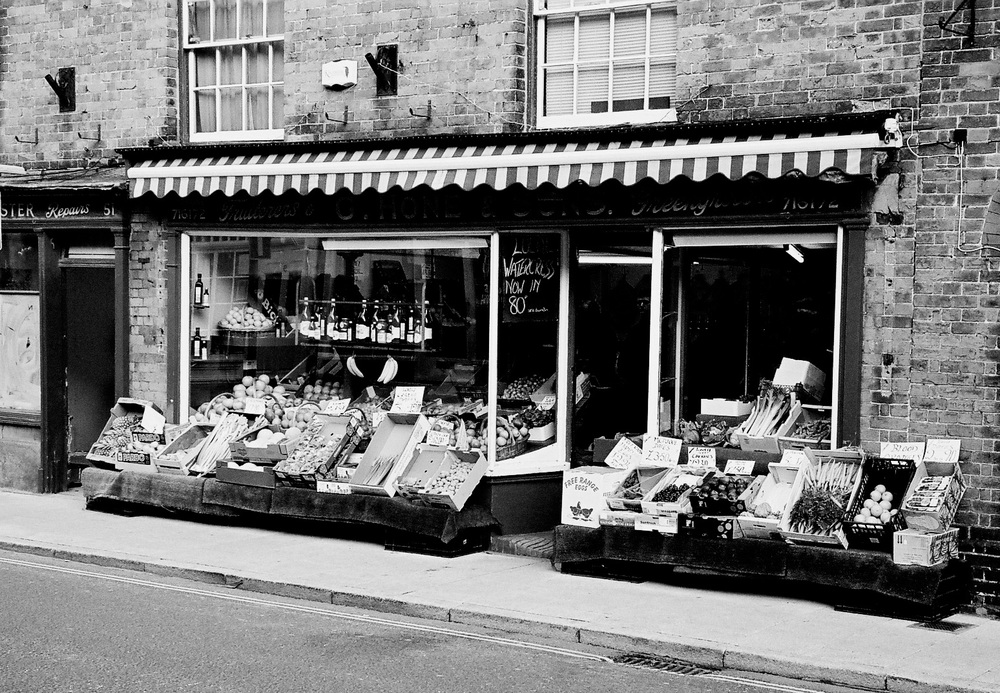
When I saw daylight again, I was in England. I confess I was tired. Worn out. The last thing I wanted to do was any work. My new owner seemed to understand, though. He examined me gently, ran through all my speeds, cleaned off the accumulated grime and years of grease with a cotton bud then trimmed the leader on a roll of black and white film and loaded me for the first time in many years. He fitted me with a lens—yet another 5cm ELMAR—and took me up to London.
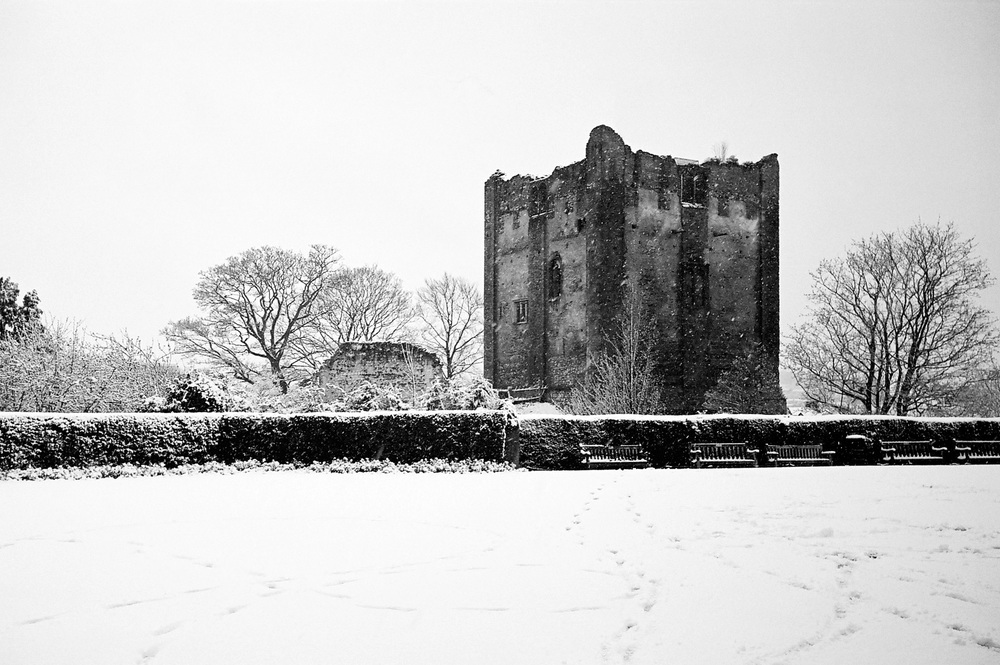
That first roll of film after so long was not easy. To say I was out of practice would be an understatement. I creaked and groaned, and my timing was off—way off. Still, the man looked at the prints from my first roll of film in the new century and nodded in appreciation. He sent me off for a full service; I was cleaned, lubricated and adjusted and for the first time in many years I felt rejuvenated, ready to witness the world once more.
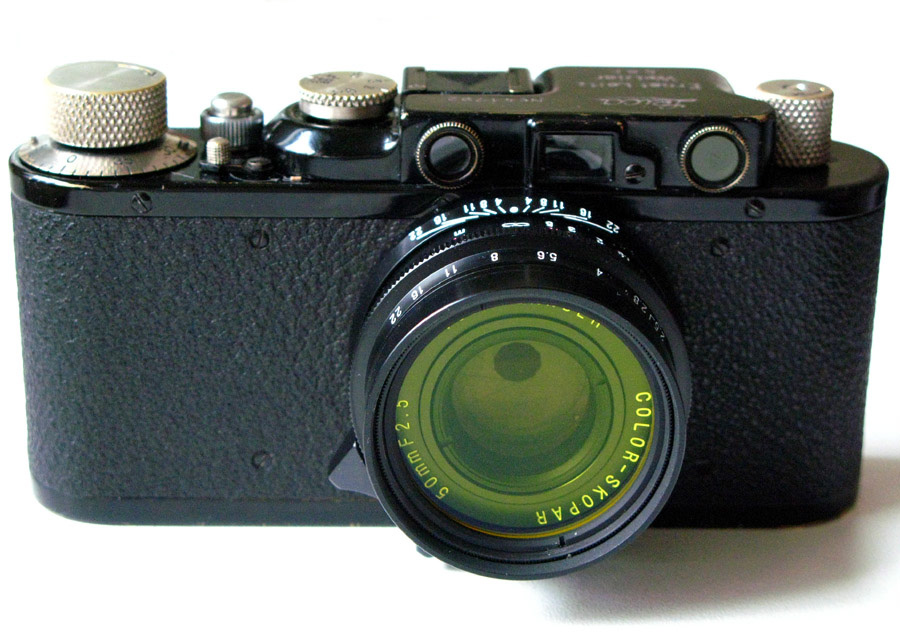
Well, that was nearly ten years ago. I wore that ELMAR with pride—and I still do to this day—but I have also enjoyed flirting with newer, sharper, younger lenses from Messrs. Voigtländer. My favourite of these younger ones is a very nice 50mm f2.5—so sharp I could cut myself!
The Englishman still owns me, and I have to say he treats me well. He doesn’t use me as much as he did at first. It was four or five rolls a week for a time—but he still runs a roll of film through me every so often and he seems quite happy with the results.
To begin with he kept me in the company of other Leicas—a charming M7, a very elegant a la carte MP4 and my favourite, an M2. It was not quite as old as me but had nearly as many tales to tell and we became very attached to one another.
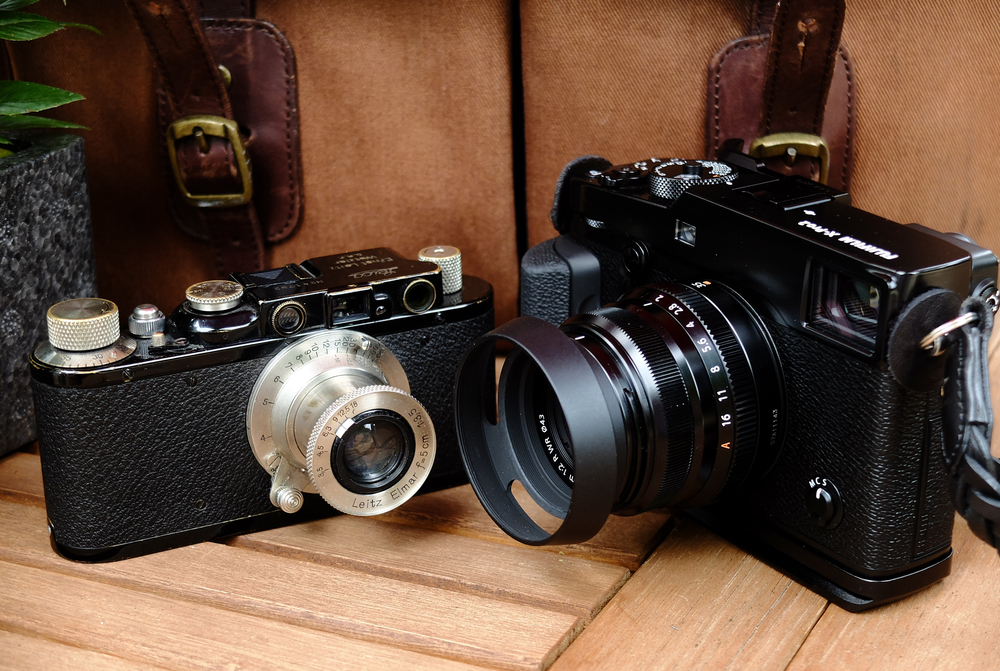
New kids
Today I rub shoulders with a group of Fuji cameras. They seem to be very competent chaps, and quite respectful too; I think they see me as an ancestor to revere. They take far better photos than I can these days, but I think that there are days when the Englishman just takes me for a walk. He says to anyone that asks that he enjoys my “purity”.
The Englishman has taken me travelling too; all around Europe, and even back to Vietnam of all places. I am sure he had no idea I already knew my way around. This time, though, I witnessed a country at peace, with hope for the future.
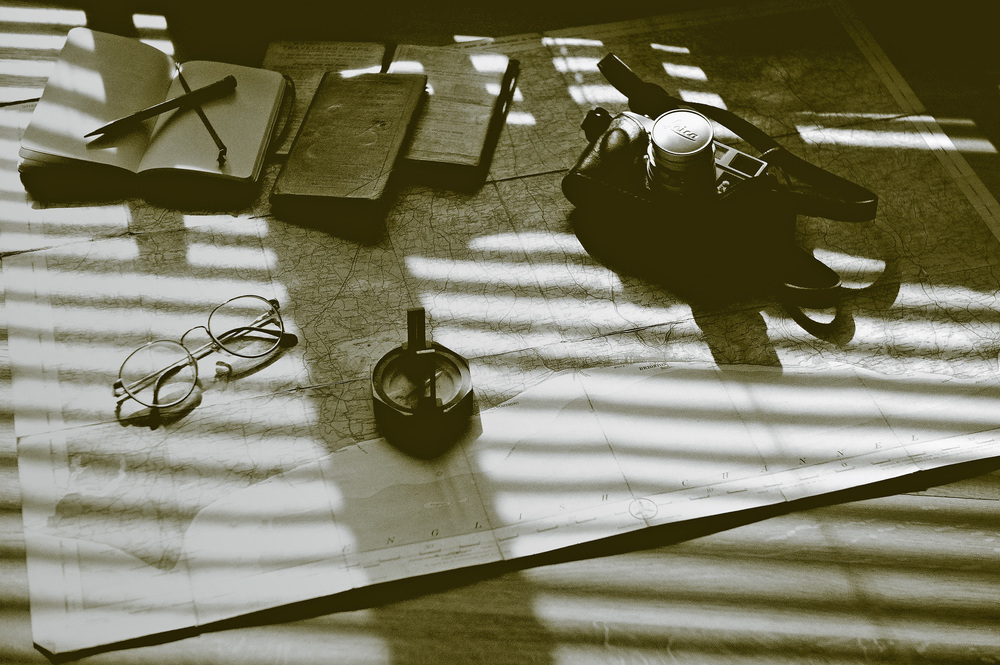
A funny thing, though; one day the Englishman was standing with me in a market in Hanoi as I witnessed some street traders for him, when an old local man approached us with a smile. He pointed to me and spoke one word—“Bao-chi?” The English man smiled and in return simply said “Traveller”—and in that moment I was proud to be a traveller too, and a witness to so much of the past eighty-six years.
So, that is my story. So far. My vulcanite is intact, my top and bottom plates still shiny—although there is some brass now among the black. Roll on the rest of the century, I say; as long as there is film—and an ELMAR—I shall carry on. I have to say that the Englishman seems in no hurry to pass me on. Still, I sometimes cannot help but wonder just who will call me to witness next—and where. But please, no more wars. I have seen enough of those for any one camera.
_______________
- This article is also available in German at Messsucherwelt.com
- You can find more from Bill Palmer at Lightmancer
- Subscribe to Macfilos for free updates on articles as they are published. Read more here
- Want to make a comment on this article but having problems? Please read this

Just, wonderful!!
Great story Bill. I suspect my 1936 IIIa (which I have had for 58 years) could have a similar tale, but it will never be known.
Bill,
What a wonderful way of giving a ‘real’ life to your Leica! And I bet that it may have been as full as you tell it. Those oldies really belong to their owner in so far as they depend entirely on them for the results, whereas all the electronics added later on make the camera sort of a stranger and the photographer a button pusher, as it were.
Thanks for a great Story
Philippe Octo
Bill —-What a wonderful story and to be able to have almost all the documentation about the Leica IID travels, great read will pass on to my fellow Leica users…..excellent and love the photographs also….
I myself am a fifty year user of the Leica M system starting with the M3 and still using my M6s and M9 and would never give up for the Fuji or any others. I like the idea of the Leica M-D with out all the digital rubbish that
photographers think they need…"Take the Shot"….process & print later …who has time? maybe commerical, fashion wedding photographers but not when you are in a conflict zone…and really slow photographers to play with all those settings and then look at each shot to see if they got it…I think photography has gotten a bit lost in GEAR…I played with the Fujifilm XE-2, great lenses and I do like Fuji film …..but I will stick to the Leicas …They are solid, they have a proven history of dependability just like your IID…the others are just new kids………..
I am a working photographer, news, film & television stills, documentaries etc…..and still finding some work…..
Wonderful background, Skip, and I know Bill will be interested to see this. I believe you are right, particularly in your comment on the M-D which I have owned since the day it was announced. I totally love this camera because it is simple, feels like a film camera and acts just like a film camera. Modern cameras are bloated with computer processing software (and the buttons and dials to operate it), which is fine for those who need or want it. But until the M-D there was no real alternative for photographers who wanted a much more simple approach.
Thank you, the rice paddies was where I met Catherine Leroy and leica m2, Catherine was French war photographer and I bought and named my x2 after her. She died but her Leica legacy lives on.
John, that’s a fascinating contribution. Thank you. I loved Vietnam, and the encounter with the elderly gentleman did actually happen. It is a beautiful country, sadly still scarred in places by the war but the people are lovely.
John, I have the email address you wanted in connection with the mods for the X1 speed dial. If you can send me a private email to mike@macfilos.com I will put you in touch with Treve.
Dear Bill,
Thank you very much for this exceedingly well-written biography of a camera. Even if some of it might be fiction, I can very well imagine it had happened this way.
I enjoyed reading very much!
Claus
Thank you kindly, Claus. I cannot say how much is true, but I suspect that much of what I describe happened – although perhaps not all to the same camera! ;0)
To Stephen. The nicest ‘Barnack’ (not a term I use) to use is the one you have with you. This one, the II Model D, would be top of my list from a user perspective. If you want one that is slightly more modern with 1,000th top speed try the IIf Red Dial. They are all nice to own, particularly the black and nickel models made between 1925 and 1936.
William
Indeed. I had a IIIf for a while, but similar to your earlier comment I wasn’t keen on the slow speed dial under my fingers, particularly when I never used it. My II is a dream in terms of simple usability. I always have, and always will, shoot meterless cameras with monochrome film, ISO 400, and estimating based upon "Sunny-16" (or "Sunny-11" as I prefer to think of it on a dank and overcast day in June). I prefocus/zone focus using the position of the infinity lock/focussing lever as a tactile guide and shoot my first one or two shots like that, before focussing more critically if I have time.
I have to say, in my defence William, that "Barnack" is not a term I can honestly say I have ever used before… Unless I used it when I was talking to Mike about my recently sold X-E, who compared that camera to the early Leicas… Once I discovered that it had an ‘AA’ filter and also that I had a M-P, it became surplus, and had to go.
I only use it here because that is how Bill introduced his piece… Unless you mean that the term you wouldn’t use is ‘nicest’, in which case, I would agree, my teacher always said that ‘got’ and ‘nice’ were over-used and should be avoided.
I will look out for a IIf perhaps.
Interestingly, I spent all day yesterday with a pair of Sinar 4×5 cameras on a roof in Brixton… The very nemesis of these little Leicas.
regards
Stephen
Dear Bill
Thanks for the wonderful ‘history’ ( imagined or otherwise of your Leica II Model D. It is one of my favourite Leicas, along with the I Model A and the M3. The first LTM model I bought was a Model D, but it had a chrome Summar and some of its nickel ‘furniture’ had been replaced by chrome items. So then after getting the ‘collector’ disease, I bought a fairly perfect one with all nickel furniture and Elmar. I then bought another one in order to get the Hektor that was mounted on it. I got it for the price of the Hektor, so the camera came for ‘free’. I prefer the II models to the III ones as I dislike having that slow speed dial, which I don’t use, under my right hand.
Enough of the nonsense about Leicas as mere objects. What I like about your story is that you are showing the life your camera (may have?) led over 86 years as well as some wonderful photos that it took in your hands. Provenance for a Leica camera does not have to involve famous photographers such as HCB or Eisenstadt, as they were in the hands of hundreds of thousands of photographers right around the world and each one has a tale to tell.
As a jazz fan, I would really like to think that one of my cameras was in a jazz club in NYC with Monk and Bird, although most of the available light work in jazz clubs during that period that I have seen from the likes of Leonard and Gottlieb was taken on large format cameras. I do have one camera that was used by a well known photographer from Long Island near Niagara falls, but I cannot tell by looking at his photos if they were taken with my camera. In another case, which I have mentioned in an article on this site, I have found details written on the inside lid of a box for FILCA film cassettes which lists photos taken in England and Germany in May 1935. Although the camera (a very early IIIa) I received with the box has a different serial number to that on the box (which was for another IIIa). There I go, sounding like a collector again. Some of my FILCAS have film inside but I have not had any developed. I do know of one case where a Leica user had film from an old FILCA developed and it turned out to contain photos of a certain Herr H entering Vienna in 1938. Finally, I have a 1926 I Model A which has lost all of its paint, but the name of a town in India is inscribed inside its very early ETRIN case. I could just imagine this camera having many adventures during the Raj period. In a recent talk to the Leica Society, Lars Netopil , the well known Leica historian, gave details from factory records of a Luxus demonstration model that travelled all the way to a dealer in Shanghai in the early 1930s. It seems, therefore, that the admiration in East Asia for fancy Leica models goes back a long way.
Cameras are inanimate objects, but they do enable their owners to tell real stories and record important events in their lives. They also accompany their owners as they go through their lives and your camera’s ‘story’ really brings this out in a splendid way. Thanks once again.
William
William, thank you very much for your kind words; I am glad that you enjoyed the tale. May I commend to you – and indeed to anyone who is interested in such things – a book entitled "India The Shimmering Dream" It is by Max Reisch and documents the epic journey that he undertook in 1933 through Iraq, Iran and Baluchistan (Pakistan) to India. He was accompanied by his friend, Herbert Tichy on a two-stroke Puch motorcycle and they recorded much of their trip with a Leica similar to my own.
Very nicely related Bill…
But tell me, are those pictures really from your camera, and is that history ‘a plausible story’ or the reality?
If it is the latter, that must have taken an amazing amount of effort to establish.
Cue William and others…
Which is the nicest ‘Barnack’ to own and run?
Good morning Stephen!
It’s a bit of whimsy, of course, although most of the photos above were indeed taken by or of my camera. Some poetic licence has been applied, but not enough to earn an endorsement ;0) My II is indeed a I, as per the serial number. It did indeed come to me from America. I have indeed taken it travelling around the world in the time that I have "curated" it. The rest is historically accurate, in terms of world events. Did it witness all those things – or many others? Who knows? I just think it’s nice to salute the "old timer" in this way ;0)